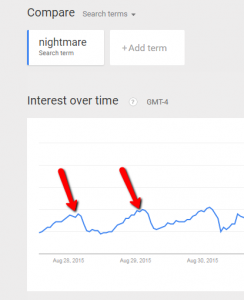
by spaceamoeba
As with many areas of the search engine world, there are some grey areas but Google does provides some guidelines on how to manage redirections and what each communicates to the search engine.
A 301 Redirect signals to the search engine that the page has been moved permanently, remove the page from the index and pass any acquired SEO credit to the new page.
A Canonical Attribute signals to the search engine that the document has multiple versions of the page (or its content). The URL pointed listed in the canonical attribute should be consider the original, the real page: only it should be indexed. The duplicated pages will be kept on the website but should not be indexed by the search engine.
301 Redirects ” What It Is & When To Use It
A 301 Redirect is a HTTP status code (send out by the web server) that is used to communicate to software (browsers, crawlers) and search engines that the original page that is trying to be accessed has been moved permanently to a new webpage. When your browser receives this code it will automatically go to the new URL which is mentioned together with the 301 status code.
Implement A 301 Redirect When:
- Your domain is permanently moved, for example, due to rebranding
- Webpages are either replaced or permanently moved
- You have expired webpage content or 404 errors and you want to point to another, relevant page
Common Challenges:
- Server access, often via FTP, is required
- Delay in search engines attributing link authority to the new webpage
- Incorrect use of the redirect. A redirect is not intended to be used to point all webpages to one page of the new website, for example the Home Page. Selecting a new, relevant page will provide the most benefit.
In the majority of cases, implementing 301 Redirects to the new URL is the favourable choice due to the fact that very little of the original webpages link authority is lost.
Canonical Attribute ” What It Is & When To Use It
First and foremost, the Canonical Attribute is not a redirect. A rel=”canonical” attribute will not redirect a visitor to the new URL, instead it is used as a signal for search engines to indicate which page to index in the search results when similar or duplicated content appears within a website.
Implement A Rel=canonical Attribute When:
- Content which is similar or duplicated across a website and both pages are to remain visible
- Content syndication
- Dynamic pages which generate multiple URLs for one page (in this case telling Google how to handle the URL parameters may be useful)
- When 301 Redirects cannot be implemented
Common Challenges:
- Duplicated pages may still appear in search results. The rel=:canonical” attribute is a hint, not a directive, and may be ignored by search engines
- Misuse of the tag on webpages that do not display a large percentage of similar or duplicated content.
- Incorrect implementation
Next Steps
- To learn how to add the canonical attribute via HTTP headers, so you can update a huge amount of pages, click here. To find out how to implement them using the .htaccess file, click here.
- 301 Redirects can be implemented in your .htaccess file. Here are 5 htaccess redirect tricks.
- If you have Microsoft Excel you can check redirects without relying on other services or software. Click here to learn how.
- There are no less than five types of redirects, the 301 included. Find out what they are and what they do.
Post from: Search Engine People SEO Blog
What is the Difference between 301 Redirect and Canonical Attribute
—
Written by Carla Barker,
The post What is the Difference between 301 Redirect and Canonical Attribute appeared first on Search Engine People Blog.
(403)





